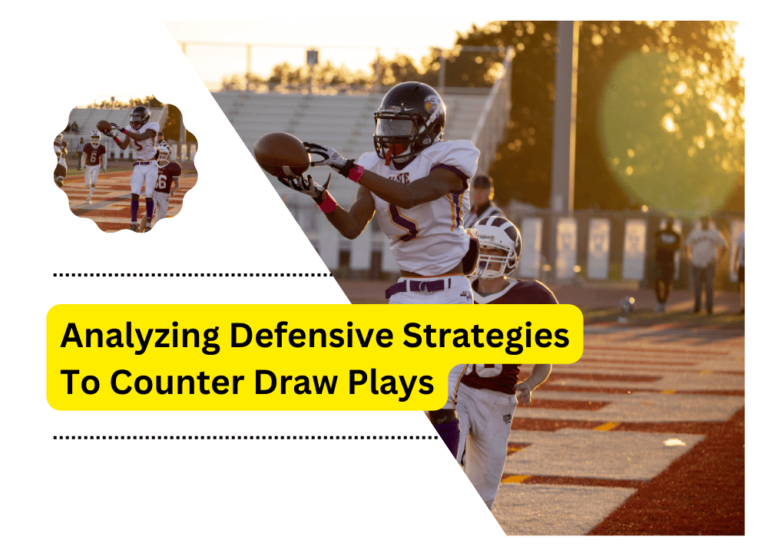How To Throw A Football Like An Elite Player?

To become a skilled football thrower, it’s important to first understand How to throw a football. Start by finding an open area that is free of obstacles and people. Position yourself with your feet slightly wider than shoulder-width apart and face your target. Hold the ball with a firm but not too tight grip, and ensure that all four fingers are evenly spread around the laces.
Next, bend your knees slightly and bring your throwing arm up near your ear. This position, known as the “cocked position,” helps generate power for your throw. Rotate your hips toward the target to create momentum and straighten out your other arm for balance. Finally, snap your wrist quickly while pushing off your back leg and step forward with your front foot.
Consistency in your form and arm motion is key to how to throw a football successfully. As you practice, focus on maintaining your elbow up near ear level when in the cocked position and releasing the ball at the highest point of your arm swing.
The fundamentals of a proper football throw:
- Stand facing your target with feet slightly wider than shoulder-width apart.
- Grip the ball firmly but comfortably with all four fingers spread evenly around the laces.
- Lift your throwing arm up near your ear and bend your knees slightly.
- Rotate your hips towards the target to create momentum.
- Straighten out your other arm for balance.
- Quickly snap your wrist while pushing off your back leg and step forward with your front foot.
- Keep your elbow up near ear level when in the cocked position and release the ball at the highest point of your arm swing.
- Consistently practice throwing to perfect your form and motion.
- Continue arm motion even after the ball has been released.
- Maintain eye contact with the target throughout the entire throwing process.
Choose the right size football for your body type and throwing arm strength:
For quarterbacks or receivers, choose a football that is 11 to 11.25 inches long and weighs 20 to 21 ounces. For running backs, wide receivers, or defensive backs, select a slightly smaller football that is 10 to 10.25 inches long and weighs 17 to 18 ounces. Kickers or punters should use the smallest football that is 9.5 to 10 inches long and weighs 14 to 15 ounces.
Consider your body type and throwing arm strength when selecting a ball size. Ensure that you can grip and throw the football comfortably with both hands. Test out different sizes of footballs at a sporting goods store to determine the best fit for you. Ask experienced players or coaches for advice on proper football size. Remember that practice and repetition are essential to successfully throwing any football, regardless of size.
Practice grip techniques – how to hold the ball correctly when throwing:
- Hold the football with your non-dominant hand and spread your fingers comfortably around the laces.
- Place your thumb underneath the laces and wrap it around the other side of the football.
- Maintain a firm but comfortable grip on the ball, ensuring that all fingers are evenly spaced and secure.
- Slightly bend your pointer finger and touch the back seam of the football.
- Keep your fingertips just barely touching the laces and not too close to them.
- Maintain a steady grip and apply even pressure with all four fingers on the laces when throwing.
- Practice gripping techniques with both hands to throw accurately from any angle.
- Use a football that is the correct size for your body type and throwing arm strength.
- Keep your grip on the ball steady throughout the entire throwing motion.
- Be mindful of how you hold the football, as it can affect accuracy, spin, and distance.
What to keep in mind when training to throw a football:
How to throw a football? Warm up your body with stretching and light cardio exercises before throwing. Partner with a coach or friend who can provide feedback on your form and technique. Increase accuracy and arm strength by throwing the ball in various directions and distances. Take breaks between throws to rest and prevent fatigue.
Also, Prioritize form and technique over arm strength when throwing. Visualize the ball’s flight path before throwing it. Consider weather conditions, especially wind speed, which can impact accuracy. Stay relaxed throughout the entire throwing motion to avoid inaccurate throws.
Regularly practice throwing techniques to improve skills and accuracy. Don’t get too frustrated if mistakes happen; enjoy the process of becoming a great quarterback or receiver.
Master your footwork and leg drive for increased power:
Step forward with your non-dominant foot while throwing. Keep your dominant foot firmly on the ground and pointed towards the target. Generate power by pushing off of the back leg while rotating hips towards the target. Maintain steady leg drive throughout the entire throwing motion. Transfer weight from the back leg to the front foot while throwing.
Focus on balance and body control as you throw. Combine proper arm motion with footwork to generate power for longer throws. Practice footwork consistently to master it over time. Consistency with form and technique leads to better throws. Seek advice from coaches or experienced players on proper footwork and leg drive. Master the fundamentals to become an elite quarterback or receiver.
FAQs
13-year-old athletes can throw a baseball at varying speeds, depending on their physical fitness level and practice. Generally speaking, they should be able to throw a ball at around 45 mph or more. This speed can increase significantly over time with increased strength and technique development.
You may think a strong arm is all you need to throw hard. While arm strength is necessary, there is a significant transfer of force from your feet to your leg, to your core, and through your arm to generate velocity on a ball.
Conclusion
How to throw a football? To become an excellent quarterback or receiver, it is essential to focus on mastering the fundamental techniques. Start by learning how to hold the ball correctly, selecting the right size football, and working on your footwork and leg drive. As you gain more experience, you can enhance your accuracy, power, and distance on the field. With consistent practice, you can become a skilled player and master the game of football.






